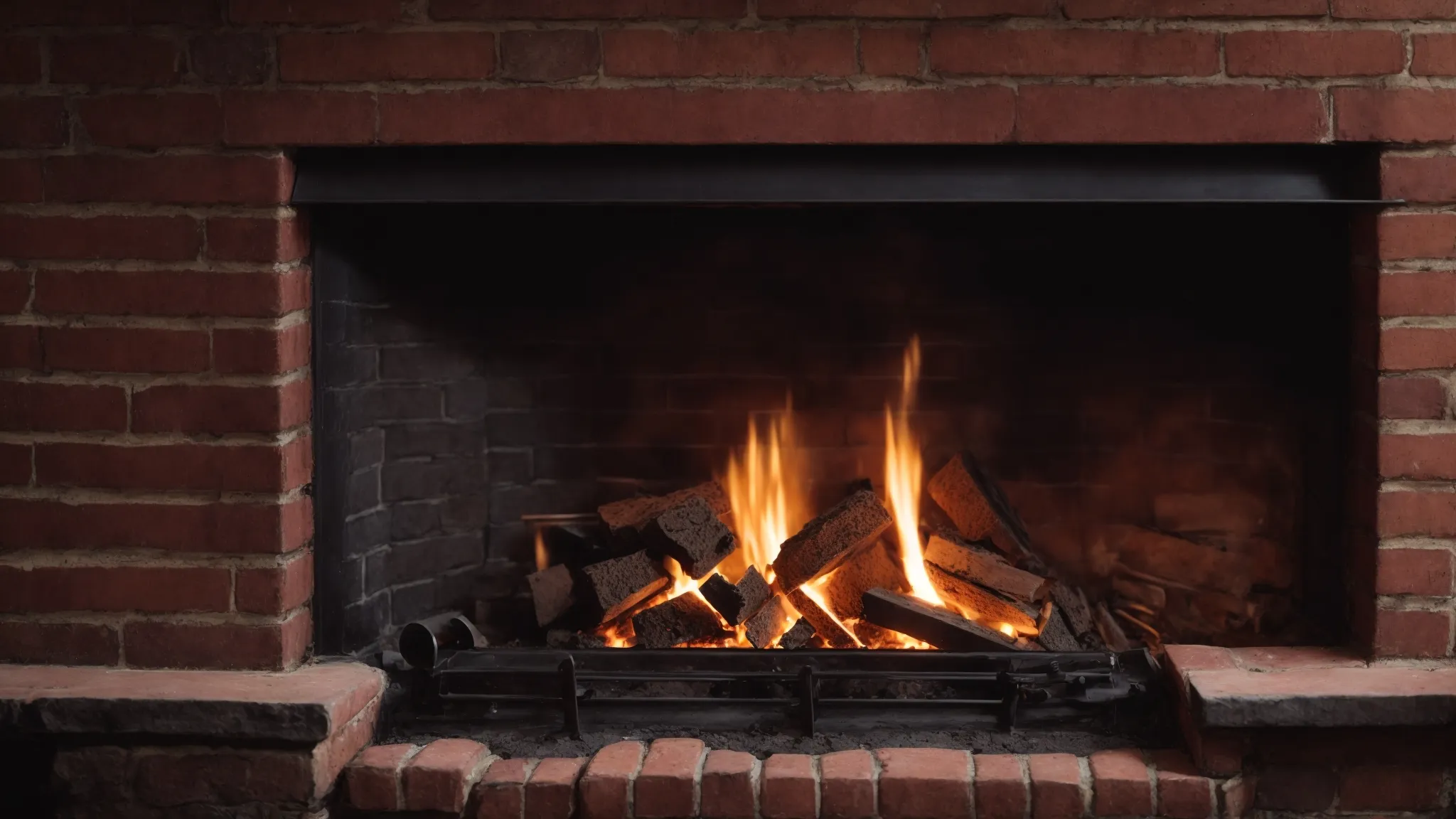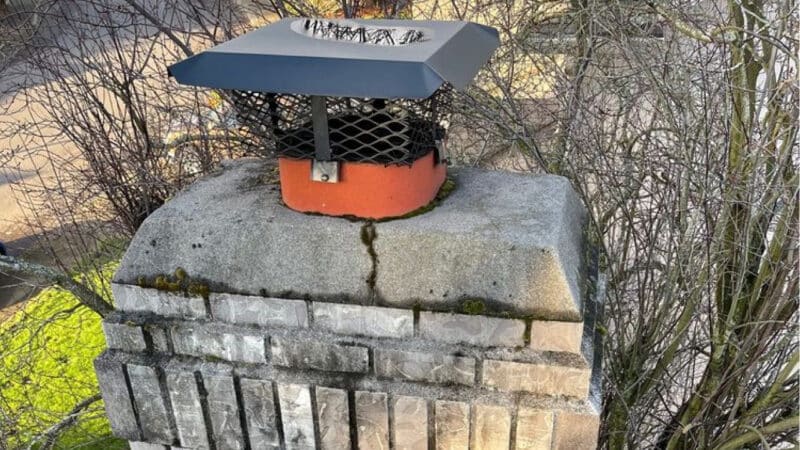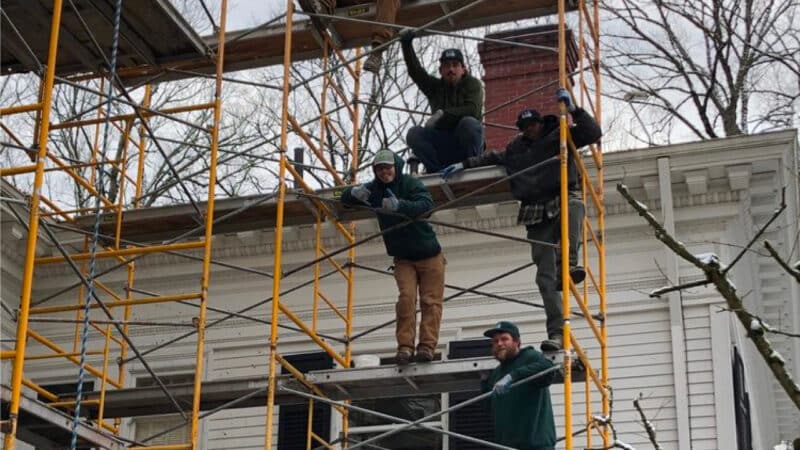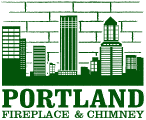If you own an older fireplace or find yourself looking at some worn brickwork it may be time to consider having your masonry repair. But how can you know when it’s time to hire a professional to repair your chimney?
It’s important to have masonry in good condition because the chimney’s bricks and mortar provide support and help vent harmful gases out of your home.
Over time, this masonry can wear down and make your chimney work less effectively. In this simple guide, we’ll look at common signs that you can look for yourself that indicate your chimney’s bricks and mortar need fixing.
Understanding Chimney Masonry

The chimney’s bricks and mortar make a strong enclosure that guides soot and gases safely out of your home. Usually, they’re made with sturdy bricks to handle rough weather and lots of use.
The bricks used in chimneys are special – they can handle high temperatures without weakening, making sure your home stays safe.
On the other hand, mortar is the glue that sticks the bricks together, creating a tight seal against rain or wind.
Why Chimney Masonry is Prone to Damage
Even though chimney masonry is tough, it still faces challenges that can make it wear out over time. One big problem is the weather.
Rain can get into the bricks, and when it freezes, it makes the water inside the bricks expand. This can create pressure inside and eventually damage the bricks. This happens more when there’s a cycle of freezing and thawing, making the bricks crack or break.
Also, how old the chimney is matters. As it gets older, the mortar joints can get weaker, letting water in and making the whole thing wear out faster. In East Moreland and Irvington we find a lot of older chimneys that, if the chimney wasn’t built well or has design issues, can end up having structural problems that show up as damage to the chimney masonry.
Common Signs of Chimney Masonry Damage

Look out for these 5 signs that could indicate the need for chimney masonry repair.
1. Cracks in the Brickwork
One of the clearest signs of chimney masonry damage is the presence of cracks in the brickwork. These cracks can take on different patterns, such as horizontal, vertical, or stair-step, visible on the exterior surface of the chimney. Horizontal cracks may suggest more severe issues and should be promptly examined by a professional chimney mason.
To identify cracks, step back and visually inspect your chimney from a distance. Look for any irregularities in the brick and mortar. For a closer look at rooftop masonry without a ladder, use binoculars to spot fine cracks that may not be visible from the ground.
It’s crucial to differentiate between cracked bricks and cracked mortar joints. Cracked bricks compromise the chimney’s integrity and require immediate attention. On the other hand, cracked mortar joints are relatively easier to fix, usually involving repointing—removing and replacing damaged mortar with fresh mortar.
2. Spalling Bricks
Spalling occurs when the surface of bricks chips, flakes, or breaks apart. Spalled bricks may look rough, with parts of the brick breaking off and revealing the inner, more porous layers. This usually happens when moisture gets trapped within the bricks and then freezes, causing internal pressure and eventual deterioration of the brick surface.
In Portland, Laurelhurst, and Overlook Park where severe weather is common in winter spalling bricks are a common site on older homes. To identify spalling bricks, carefully inspect the exterior surface of your chimney. Look for areas where the bricks seem to be crumbling or have rough patches. Not only are spalling bricks unsightly, but they can also compromise the structural integrity of the chimney.
If you notice spalling bricks, it’s crucial to address the issue promptly. Spalled bricks should be replaced to prevent further deterioration and potential hazards. A professional chimney mason can assist in this repair process.
3. Crumbling or Deteriorating Mortar
Mortar plays a crucial role in holding bricks together, creating a strong and unified chimney structure. However, because of its composition, mortar is more prone to wear and tear compared to bricks. Over time, exposure to weather elements and temperature changes can cause the mortar to break down.
To check for crumbling or deteriorating mortar, visually inspect the mortar joints between the bricks. If you see gaps or areas where the mortar has worn away, it’s a sign of chimney masonry damage that needs attention. Weakened mortar joints can compromise the chimney’s structure and may lead to misalignment of the bricks, making the issue worse.
To fix deteriorating mortar, a process called repointing is often used. Repointing involves removing the damaged mortar and replacing it with fresh mortar to restore the chimney’s stability. Hiring a skilled professional for repointing is crucial, as using proper techniques and materials ensures the longevity of the repairs.
4. Leaning or Tilting Chimney
A chimney that is leaning or tilting is a serious problem that needs urgent attention from a professional chimney mason. Normally, a chimney should stand straight and securely attached to your home’s structure. If you observe your chimney leaning away from the house or tilting to one side, it could indicate significant structural issues.
Leaning chimneys are often caused by problems with the foundation, settling of the ground, or water damage. Regardless of the cause, a leaning chimney poses a substantial safety risk and should not be overlooked. Continuing to use a chimney in this condition could lead to more damage, potential collapse, and put the occupants of your home in danger.
If you suspect a leaning or tilting chimney, get in touch with a professional chimney mason right away. They can assess the situation and recommend the necessary steps. Dealing with the problem promptly can prevent expensive repairs and ensure the safety of your home and its occupants.
5. Water Leaks
A clear sign of a chimney problem is the presence of water or water damage. If you see water in your fireplace following a heavy rainstorm, chances are you have a chimney leak. Reasons for chimney leaks include deteriorated mortar, damaged flashing, and cracks in the crown.
Keep an eye out for moisture or condensation around your chimneystack, spalling (chipping away of chimney pieces), or the buildup of salt deposits on your bricks. A chimney leak can lead to water damage in your siding, walls, and ceiling over time, and it may also contribute to issues within your chimney, such as leaning or collapse.
Regular Inspections Can Limit Chimney Damage

To identify chimney masonry damage, it’s crucial to conduct a thorough exterior inspection. Begin by stepping back and visually examining your chimney from a distance. Keep an eye out for visible cracks, spalling bricks, or any signs of leaning. Make note of any irregularities in the brickwork or mortar joints.
Using binoculars can provide a closer view of hard-to-see areas, helping you spot finer cracks or signs of deterioration. Pay special attention to the top and crown of the chimney, as these areas are particularly susceptible to water damage.
Check for discoloration or white stains on the brickwork, as these may indicate efflorescence—a crystalline deposit left behind by evaporating water carrying minerals from within the masonry.
The Importance of Interior Chimney Inspections
While examining the exterior is essential, assessing the chimney’s interior is equally vital. Inspect both the fireplace and the interior of the chimney for indications of water infiltration, discoloration, or flaking. These can serve as signs of chimney masonry damage and offer valuable insights into the extent of the issue.
Look for evidence of water entry, such as water stains or dampness around the fireplace. Addressing water leaks promptly is crucial, as they can significantly contribute to chimney masonry damage.
If you feel unsure about conducting an interior inspection, it’s advisable to hire a professional chimney sweep or inspector. They possess the expertise and tools needed to thoroughly assess the chimney’s interior, identifying any issues that require attention.
Hire Portland Fireplace and Chimney for Trusted and Long-lasting Chimney Services

Trust is something you earn, and when it comes to keeping your home safe from chimney fire, trust Portland Fireplace and Chimney. We are the best in Portland at making sure your fireplace stays warm and strong
When you notice signs your fireplace masonry need repair, don’t wait. Contact Portland Fireplace and Chimney, the experts who take care of Oregon’s classic fireplaces, and make sure your fireplace stays safe and strong with our professional help, brick by brick.
Frequently Ask Questions
How urgent is it to address a leaning chimney?
A leaning chimney indicates a serious structural issue that requires immediate attention. Ignoring it can lead to further damage or collapse, posing a safety risk. Contact a professional chimney mason promptly to assess and address the problem.
How can I differentiate between cracked bricks and cracked mortar joints?
Cracked bricks compromise the chimney’s integrity and require immediate attention. On the other hand, cracked mortar joints are relatively easier to repair through a process called repointing—removing and replacing damaged mortar with fresh mortar.
How often should I have my fireplace masonry inspected?
It’s recommended to have your fireplace masonry inspected at least once a year by a professional chimney sweep or inspector. This helps catch potential problems before they escalate.
Can I use my fireplace if I notice signs of masonry damage?
It’s not recommended to use the fireplace if you observe signs of masonry damage. Continuing to use a damaged fireplace can exacerbate the issues and pose safety risks. Contact a professional chimney mason to assess and address the damage before using the fireplace again.
How long does it take to repair fireplace masonry?
The duration of repairs depends on the extent of the damage. Minor repairs may be completed relatively quickly, while more extensive damage may require additional time.
A professional chimney mason can provide a timeframe based on the specific repairs needed.

Portland Fireplace and Chimney Inc is your top notch pick for a fireplace and chimney company in the greater Portland metro area.

